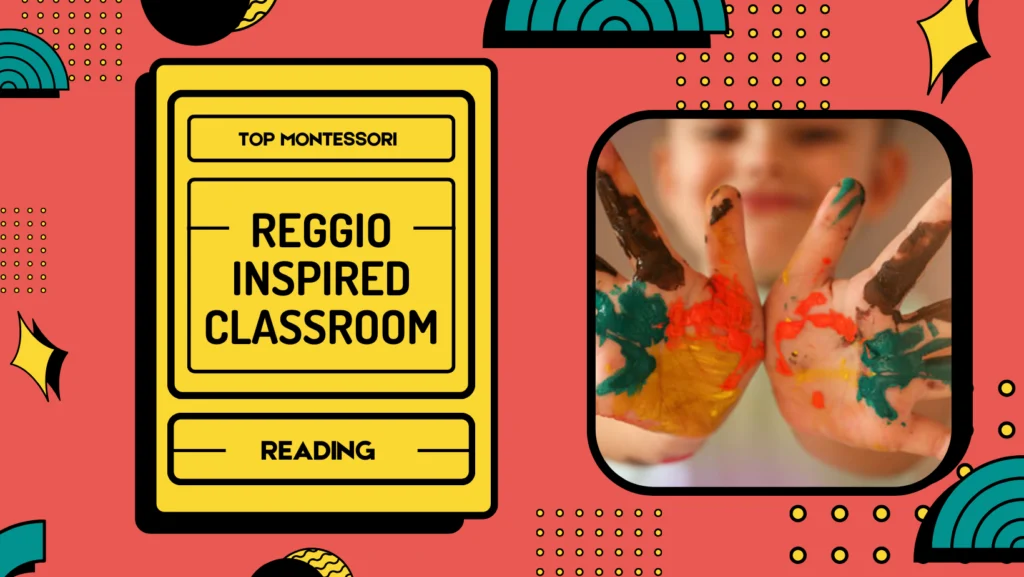How does a Reggio Inspired Classroom break away from traditional education norms to cultivate creativity and independence among its kids? In the dynamic and interactive environment of a Reggio Inspired Classroom, every element is thoughtfully designed to stimulate curiosity and foster self-directed exploration. But what makes this educational model stand apart in cultivating such a unique and empowering learning experience?
At the core of the Reggio Inspired Classroom is the belief in the innate potential of every kid. Here, education is a collaborative notion where teachers and students engage in a mutual exchange of ideas and discoveries. The Reggio approach weaves together the threads of imagination, inquiry, and self-expression, creating a tapestry of learning experiences that resonate deeply with the kids’ interests and curiosities.
Dive into the essence of a Reggio Inspired Classroom, where the boundaries of education are expanded to embrace a holistic view of kid development. This approach not only cultivates creativity and independence but also instills a sense of community and belonging, ensuring that kids thrive in an environment that values their voices and nurtures their spirits.
Understanding the Reggio Emilia Approach
The Reggio Emilia Approach, foundational to the Reggio Inspired Classroom, is renowned for its innovative and kid-centered pedagogy. Originating from the town of Reggio Emilia in Italy, this approach underpins the philosophy that kids are competent, creative learners from birth. This philosophy comes to life in a Reggio Inspired Classroom, emphasizing the importance of providing kids a stimulating environment to express themselves, explore, and build their understanding of the world. This approach promotes an educational process that values the development of the whole kid—socially, physically, emotionally, and cognitively.
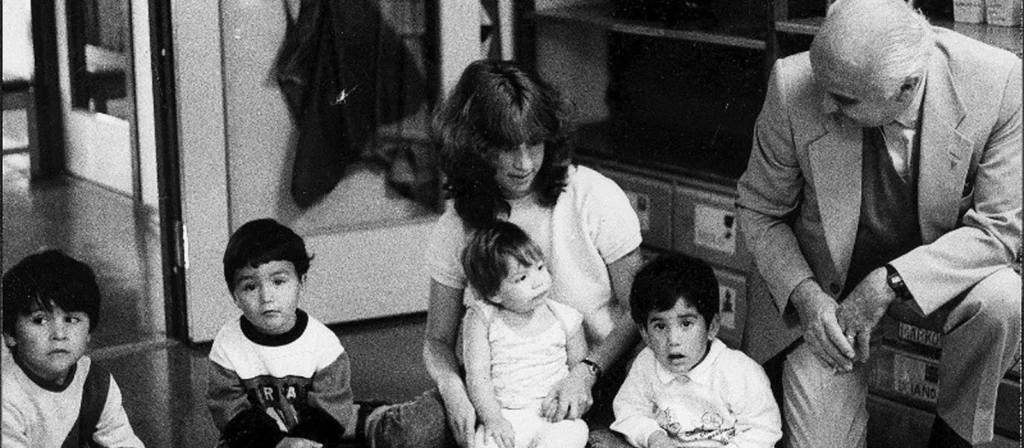
What is a Reggio Inspired Classroom?
Diving into the essence of a Reggio Inspired Classroom unveils a world where education is reimagined and revitalized. This concept, stemming from the innovative Reggio Emilia approach, offers a distinctive perspective on kids’ education. It places the kid at the center of the learning experience, valuing their potential as individuals capable of shaping their educational journey. As we explore the multifaceted nature of a Reggio Inspired Classroom, we uncover its core concept, the design of its learning environment, the pedagogical approach it employs, the pivotal role of teachers, and the significance of community and collaboration in nurturing young minds.
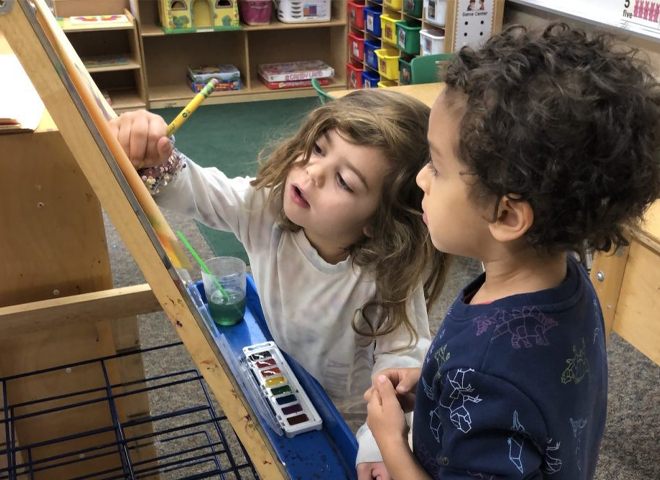
Core Concept
A Reggio Inspired Classroom is a learning environment transcending traditional educational models by prioritizing kid-led exploration and discovery. It embodies the philosophy that kids are born with the capacity to direct their own learning in a supportive, enriched setting.
Learning Environment
The layout and materials in these classrooms are intentionally designed to inspire curiosity and engagement. The flexible setting allows kids to manipulate their surroundings to suit their investigative learning processes.
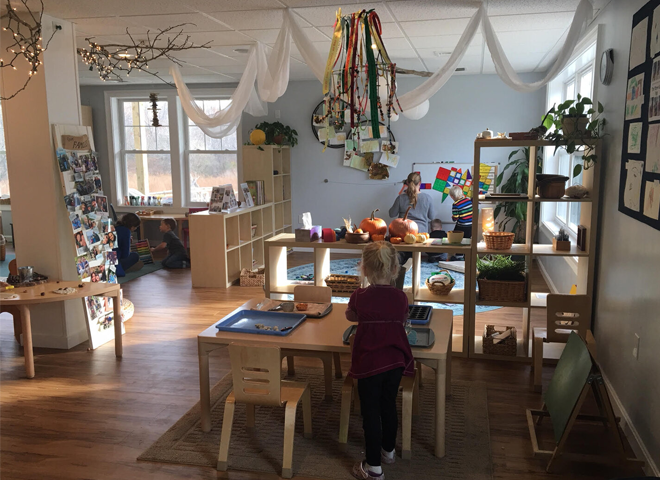
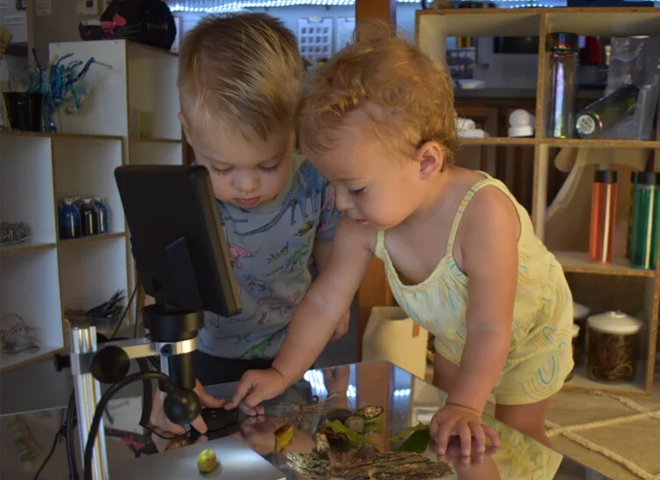
Pedagogical Approach
Central to the Reggio approach is the belief in the kid as an active participant in their education. Kids are encouraged to pursue their interests, ask questions, and explore concepts through hands-on experiences, facilitating deep and meaningful learning.
Teacher’s Role
Teachers in a Reggio Inspired Classroom act more as facilitators or guides than traditional instructors. They observe, listen, and engage with kids, helping to extend their thinking and support their explorations and discoveries.
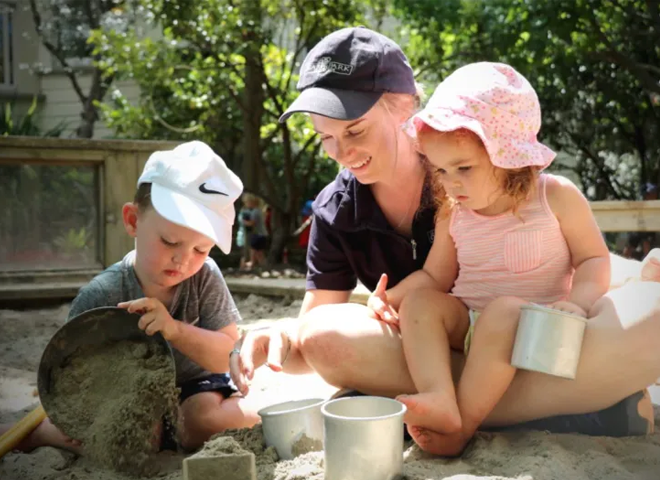
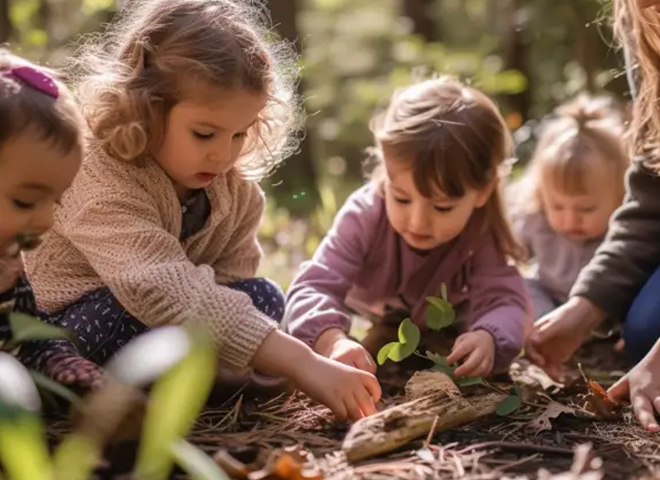
Community and Collaboration
A distinctive feature of the Reggio Inspired Classroom is its emphasis on community and collaborative learning. Kids learn to interact with peers and adults respectfully and constructively, enhancing their social skills and understanding of the world.
Principles of the Reggio Inspired Classroom
- Respect for the Kid: At the heart of the Reggio Inspired Classroom is the principle that kids are competent, curious, and capable of constructing their own learning experiences. They are viewed as active participants in their education, not just passive recipients of information.
- Role of the Teachers: Teachers in the Reggio Inspired Classroom act as guides and co-learners rather than traditional authoritative figures. They facilitate learning by observing, listening, and responding to the kid’s interests and needs.
- Learning Spaces: The environment in the Reggio Inspired Classroom is considered the third teacher. It is designed to be aesthetically pleasing and intellectually stimulating, encouraging exploration and discovery.
- Following the Kid’s Lead: The curriculum in a Reggio Inspired Classroom is emergent and evolves based on the interests and inquiries of the kids. This approach allows for a flexible and dynamic learning experience that is relevant and engaging for the kids.
- Making Learning Visible: Documentation is a crucial aspect of the Reggio approach. Teachers and kids document their progress and experiences through photographs, written observations, and artwork, making the learning process visible and reflective.
- Collaboration and Community: A strong emphasis is placed on building a community of kids. Parents, teachers, and kids collaborate, reflecting a shared educational responsibility and enhancing the learning experience through diverse interactions.
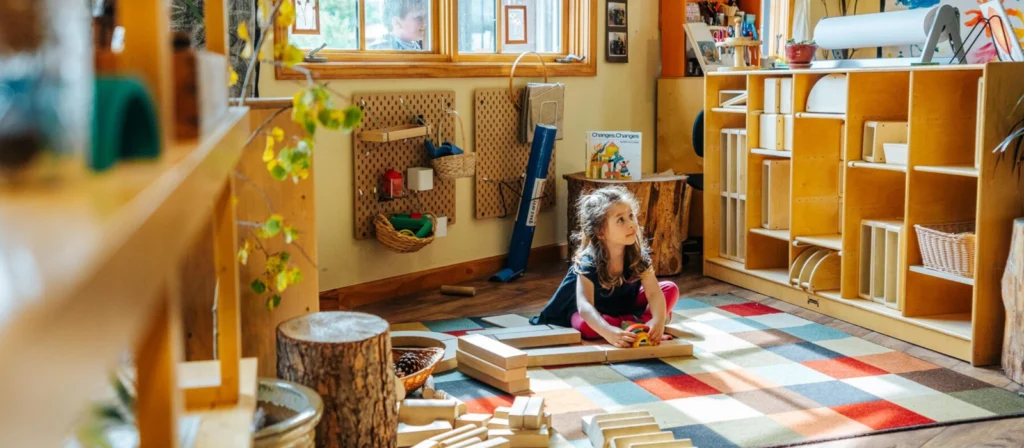
The Reggio Inspired Classroom Philosophy
- The philosophy of the Reggio Inspired Classroom is deeply rooted in the view that kids are competent, curious, and capable of engaging deeply with their surroundings. It asserts that kids are the primary agents of their learning, actively participating and influencing their educational experiences. This educational model emphasizes the creative process, encouraging critical thinking and collaborative problem-solving.
- In a Reggio Inspired Classroom, the environment is more than just a backdrop; it is an active component of the learning experience designed to provoke curiosity and exploration. Teachers in this setting adopt the role of facilitators, guiding and enriching the kids’ exploration and discovery. The philosophy champions the development of strong, collaborative relationships among kids, teachers, and families, creating a vibrant community of kids.

Benefits of the Reggio Inspired Classroom
The Reggio Inspired Classroom enriches kids by fostering curiosity, enhancing creativity, and developing critical thinking skills. Kids actively engage with their surroundings, bolsters problem-solving abilities and effective communication. This method supports social and emotional well-being, promoting collaboration within a community-focused environment. Consequently, it establishes a comprehensive and nurturing learning atmosphere that facilitates overall kid development.
Integrating Nature into Learning
Incorporating nature into the learning process is a key aspect of the Reggio Inspired Classroom, where the natural world is seamlessly woven into daily activities. This integration provides kids with direct, tactile experiences, enhancing their sensory development and fostering a deep connection with the environment. Through interactions with nature, kids develop observational skills, environmental awareness, and an appreciation for the world’s beauty and complexity, which are fundamental to the holistic educational approach of the Reggio philosophy.
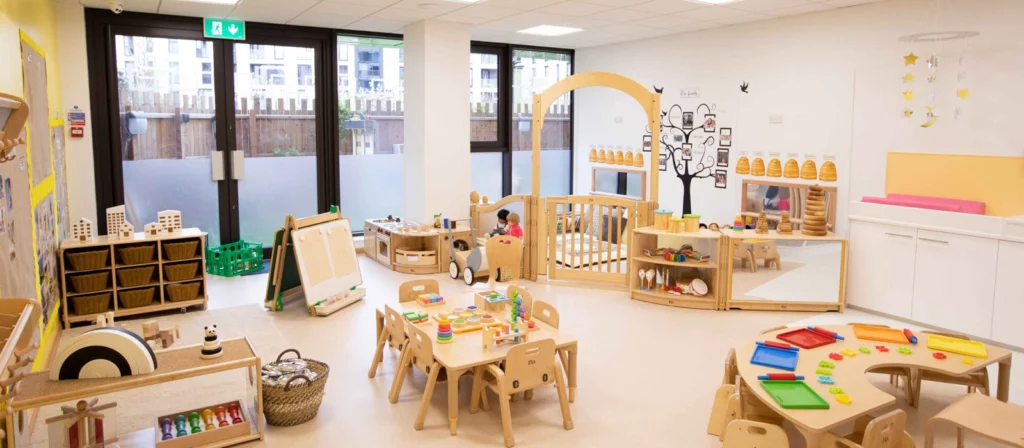
Materials for the Reggio Inspired Classroom
In a Reggio Inspired Classroom, materials range from natural and recycled items to art supplies and construction sets, each fostering specific areas of learning and development such as creativity, problem-solving, and sensory exploration.
| Material Type | Description | Purpose |
| Natural Materials | Items like wood, stones, leaves, and water | To connect children with nature and stimulate sensory experiences |
| Recycled Materials | Objects such as fabric scraps, cardboard, and plastic containers | To promote creativity and environmental awareness |
| Art Supplies | Paints, crayons, clay, and paper | To encourage artistic expression and fine motor development |
| Construction Sets | Blocks, Lego, and other building materials | To enhance spatial awareness and problem-solving skills |
| Manipulatives | Puzzles, beads, and sorting games | To develop cognitive abilities and hand-eye coordination |
| Reflective Items | Mirrors, shiny surfaces, and metallic objects | To explore light, reflection, and perception |
| Documentation Tools | Cameras, notepads, and display boards | To record and reflect on learning processes and outcomes |
Teacher’s Role in Reggio Inspired Classroom
In the Reggio Inspired Classroom, the teacher’s role is pivotal yet distinctively redefined. Rather than directing learning, teachers act as facilitators and co-learners, observing and responding to the children’s interests and needs. They provide resources, pose questions, and create environments stimulating exploration and discovery. By supporting the kids’ investigations and encouraging reflection, teachers help nurture a deep love for learning and a sense of agency in their kids. This approach fosters a collaborative and dynamic classroom atmosphere where education is a shared journey of inquiry and growth.
Documentation of the Reggio Inspired Classroom
Documentation in the Reggio Inspired Classroom is crucial in capturing the learning journey. It involves collecting and displaying kids’ work, including their words, art, and activities, to reflect on their development and thought processes. This practice allows teachers and students to revisit and analyze their experiences, fostering a deeper understanding and appreciation of their growth and learning pathways. Documentation serves as a record of individual and group progress and a communication tool, enabling ongoing dialogue between kids, teachers, and families about the educational journey.

Fostering Creativity in Reggio Classrooms
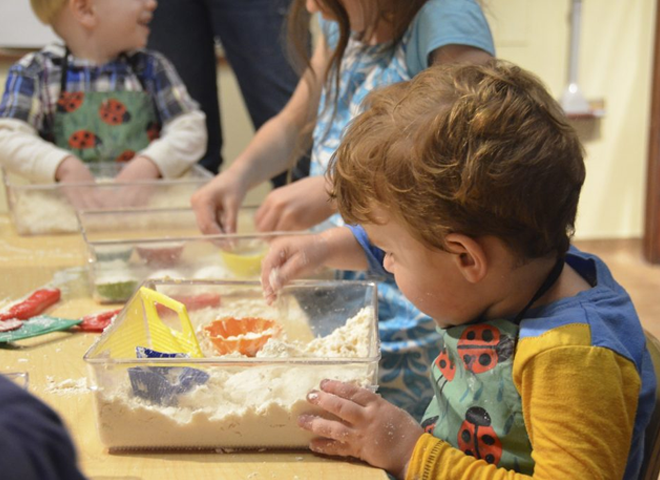
Nature as a Learning Catalyst
Integrating nature into the Reggio Inspired Classroom extends beyond outdoor play, embedding the natural world into the essence of children’s learning. This approach boosts sensory development and deepens their connection with the environment, fostering an immersive educational experience that seamlessly blends indoor and outdoor learning.
Sensory Exploration and Curiosity
Engaging directly with natural elements such as plants, water, and soil significantly enriches kids’ sensory experiences. This hands-on interaction with the environment stimulates their senses, igniting a deep curiosity and wonder. Such engagement encourages kids to actively explore and interact with their surroundings, prompting them to ask questions and seek answers about the world around them.
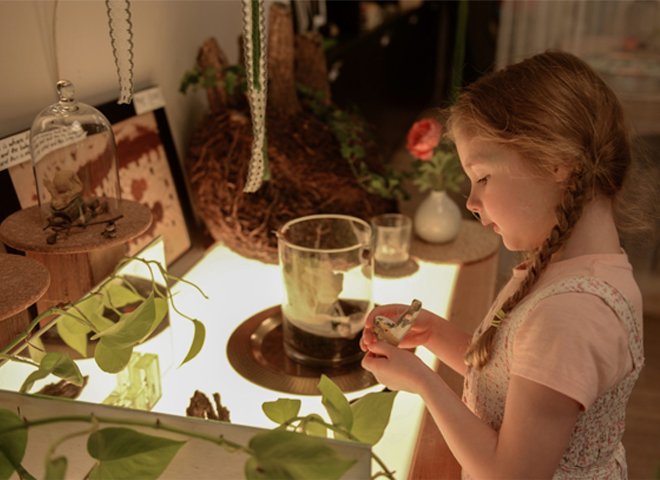

Developing Observational Skills
Active engagement with the natural world helps them to develop an acute awareness of its dynamics and rhythms. Such immersive experiences cultivate critical thinking skills and lead to a profound comprehension of natural processes. Through these interactions, kids learn to appreciate the complexity and interconnectedness of the ecosystem, enhancing their ability to think analytically and understand the world in a more integrated and holistic manner.
Fostering Environmental Awareness
As kids engage deeply with their surroundings, they understand the importance of sustainability and environmental stewardship. This hands-on interaction cultivates a profound respect for the natural world, instilling in them the principles of conservation and ecological responsibility. Through such experiences, kids are educated about the critical need to protect and preserve our environment and encouraged to adopt sustainable practices.
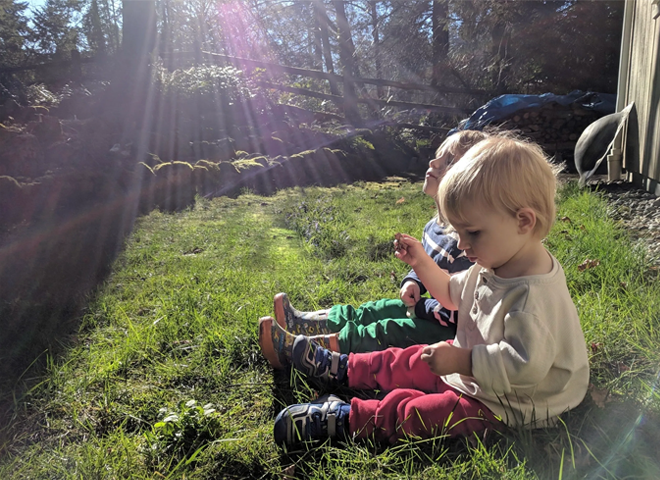
Fostering Independence in Reggio Classrooms
- In Reggio Classrooms, fostering independence is a core principle, allowing kids to take charge of their learning. This environment encourages them to make decisions based on their interests and curiosities, nurturing their ability to think critically and solve problems independently. They develop strong self-reliance and decision-making skills by actively participating in their education.
- The Reggio approach emphasizes empowering kids to initiate and navigate their learning experiences. This empowerment leads to the development of self-confidence and independent thinking. As kids take on more responsibility for their learning, they become more engaged and invested in their education.
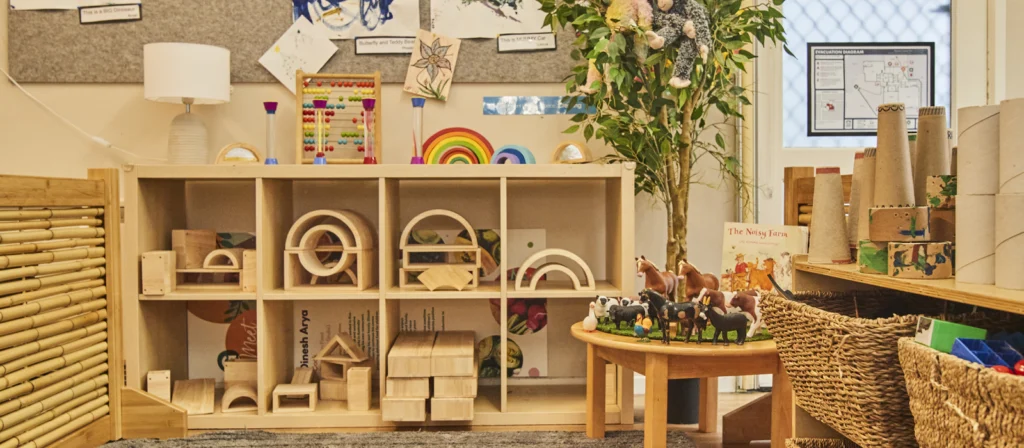
Engaging Parents in Reggio Classrooms
Active parental involvement is a basic of the Reggio Classroom, emphasizing a symbiotic relationship between the educational setting and the home. This partnership fosters a deeper understanding and shared responsibility in the child’s learning process, allowing parents to contribute actively to their child’s development and educational journey. Parents gain insights into the Reggio philosophy and methodologies through regular communication, collaborative projects, and participatory events, enhancing children’s and families’ learning experiences.
The Reggio approach values the unique perspectives and skills that parents bring to education, recognizing them as co-educators in the learning process. This collaborative dynamic strengthens the bond between home and school and cultivates a supportive network that benefits the child’s holistic development. By integrating parents into the classroom experience, the Reggio model creates a cohesive and inclusive educational environment where learning is a continuous, community-driven process.
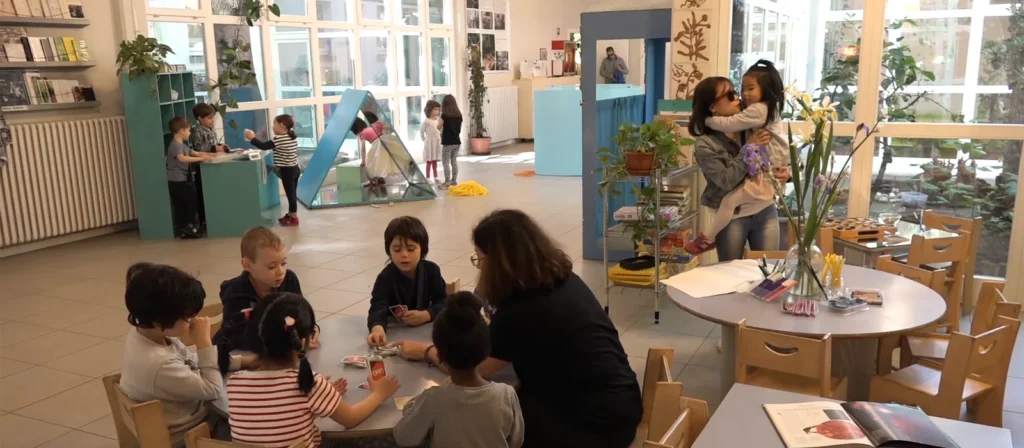
Conclusion: Reggio Classroom’s Impact on Kid Development
In conclusion, the Reggio Classroom significantly influences kid development, offering a nurturing and dynamic environment that fosters creativity, independence, and a deep understanding of the world. Through its kid-centered approach, kids become active participants in their learning, cultivating critical thinking, problem-solving skills, and a strong sense of self. The Reggio philosophy’s emphasis on collaboration, communication, and community ensures that kids develop academically, socially, and emotionally.

